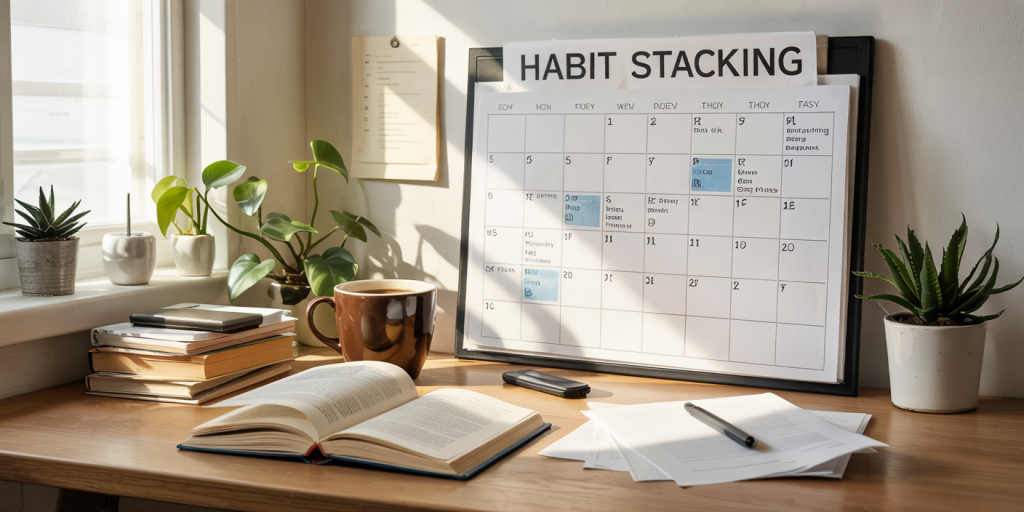How to Build Self-Discipline (Even If You’ve Failed Before)
Self-discipline is often hailed as the cornerstone of success and personal growth, yet for many, it remains elusive. Whether it’s maintaining a workout routine, sticking to a budget, or completing work projects on time, lapses in self-discipline can be frustrating and demoralizing. However, failing to build or maintain self-discipline in the past does not mean you are destined to repeat the same pattern. With the right strategies, mindset adjustments, and persistence, anyone can cultivate stronger discipline over time.
Recent data from the American Psychological Association suggests that between 70-75% of people struggle with self-control challenges across various life domains. This statistic highlights a universal challenge, reinforcing that failure in this area is not unique or permanent. Instead, it presents an opportunity to understand the mechanisms behind self-discipline and adopt proven methods to improve it.
Understanding Self-Discipline: What It Is and Why It Matters
Self-discipline is the ability to regulate one’s emotions, thoughts, and behaviors in pursuit of long-term goals, despite temptations or immediate rewards. It plays a crucial role in achievements ranging from academic success to physical health and financial stability. Studies from researchers like Angela Duckworth, author of *Grit*, link self-discipline directly to higher outcomes in life satisfaction and achievement levels.
The difference between individuals who seem naturally disciplined and those who struggle is often not innate willpower but learned habits and strategies. For example, Olympic athletes often share that their success is not about extraordinary talent alone but about rigorous daily practice and consistent routines developed over years. Understanding self-discipline as a skill rather than an innate trait can be empowering for anyone frustrated by previous attempts to build it.
Establishing Clear, Realistic Goals
One of the biggest reasons people fail to build self-discipline is unclear or unrealistic goal setting. When goals are vague or overly ambitious, maintaining motivation becomes difficult. Instead, specificity and attainable milestones are key. Psychologist Edwin Locke’s goal-setting theory emphasizes that clear, measurable goals increase performance and persistence significantly.

For instance, rather than telling yourself “I want to get into shape,” a more effective goal might be “I will jog for 20 minutes three times per week.” This small, clear objective allows for easier tracking and less overwhelming commitment. Real-world examples include companies like Weight Watchers and Noom, which focus on incremental, actionable steps rather than drastic overnight changes, resulting in higher user retention and sustained success.
The table below contrasts vague vs. clear goal setting impact on motivation:
| Goal Type | Likelihood of Success | Impact on Motivation | Examples |
|---|---|---|---|
| Vague Goal | Low (approx. 25%) | Weak and short-lived | “Lose weight” |
| Clear Goal | High (approx. 70%) | Strong and sustained | “Walk 30 minutes daily 5x/wk” |
Setting realistic goals also involves accounting for past failures by breaking down goals into achievable parts. This reduces the pressure and builds confidence with each small success, reinforcing discipline over time.
Creating Structured Routines and Habits
Discipline thrives on consistency, and structured routines serve as its backbone. When actions become habitual, they require less conscious willpower, making it easier to maintain over time. The habit formation research led by Dr. Phillippa Lally at University College London found that it takes an average of 66 days for a new behavior to become automatic.
A practical method to develop discipline is to anchor new habits to existing routines, known as “habit stacking.” For example, if you want to build self-discipline regarding reading, you might decide to read one page of a book immediately after your morning coffee. This linkage leverages the existing habit (morning coffee) to initiate the new one, reducing friction.

Real-life cases often illustrate this well. Jerry Seinfeld reportedly used an “X” calendar technique to build discipline in his writing practice; each day he wrote, he marked an X on the calendar. The growing chain of Xs provided visual motivation not to “break the streak,” turning the act into a non-negotiable daily ritual.
Managing Temptations and Avoiding Triggers
A significant barrier to self-discipline is encountering environmental or emotional triggers that prompt undesired behaviors. Neuroscientific studies note that the brain’s impulse control centers can be overwhelmed by strong stimuli or stress, leading to lapses in discipline. Effective strategies include both avoidance of triggers and deliberate exposure coupled with coping mechanisms.
For example, if someone aims to quit smoking, avoiding places where cigarettes are prevalent or social groups that encourage smoking minimizes temptations. When avoidance isn’t possible, techniques like mindfulness meditation have been clinically proven to enhance emotional regulation and reduce impulsive behaviors (Source: National Center for Complementary and Integrative Health).
In practice, apps like Forest, which gamify focus and block phone distractions, help users resist digital temptations that often derail productivity. Experimenting with digital or physical environments to design “friction” points for unwanted habits—such as putting unhealthy snacks out of reach—strengthens discipline over time.

Leveraging Accountability and Support Systems
Even the most determined individuals benefit from social support when building self-discipline. Accountability partners or groups create external motivation and can provide encouragement when willpower wanes. A study published in the *Journal of Management* demonstrated that people who share their goals publicly or with a coach are 25% more likely to achieve them.
Active accountability might involve regular check-ins with a friend, joining a gym with workout partners, or participating in online communities focused on specific goals. For example, a person recovering from debt used a peer-led Facebook group to maintain budgeting discipline, finding encouragement and advice that kept them steadfast despite setbacks.
Digital technology has also expanded opportunities for accountability, from apps that share progress with friends, to platforms that match users with accountability buddies. This support system creates external “commitment devices,” making it psychologically costlier to abandon one’s goals.
| Accountability Type | Benefits | Examples | Research Findings |
|---|---|---|---|
| Personal Accountability | Customized feedback, empathy | Friend/Coach check-ins | Increases goal attainment by 25% |
| Group Accountability | Collective motivation, shared resources | Support groups, forums | Enhances persistence and resilience |
Future Perspectives: Sustaining Self-Discipline Over the Long Term
Building self-discipline is a dynamic and ongoing process. Scientific and technological advances suggest that future interventions might become more personalized and accessible. For example, wearable devices that monitor physiological signals linked to stress could provide real-time feedback, alerting users to impending lapses in control and suggesting tailored coping actions.
Moreover, advances in behavioral economics and gamification continue to inform the design of self-discipline interventions. Apps incorporating reward systems based on neuroscience principles show promising results in maintaining motivation and habit formation longer-term. As artificial intelligence integrates further into daily life, personalized coaching could become the norm—an always-available resource to help users stay committed.
On a societal level, there is growing recognition of self-discipline as a skill that schools could better nurture with curriculums explicitly designed around executive function and emotional regulation training. Early development of these skills may prevent the negative cycles of failure many adults experience.
In sum, even if you have struggled with self-discipline before, there is every reason to believe in your ability to change. By setting clear goals, creating structured habits, managing temptations, seeking accountability, and embracing future tools and frameworks, building resilient self-discipline is achievable. Your previous attempts are not defeats but valuable learning experiences that can inform smarter strategies. Embrace the journey with persistence and adaptability, and lasting self-discipline will follow.
